 Environment
Environment
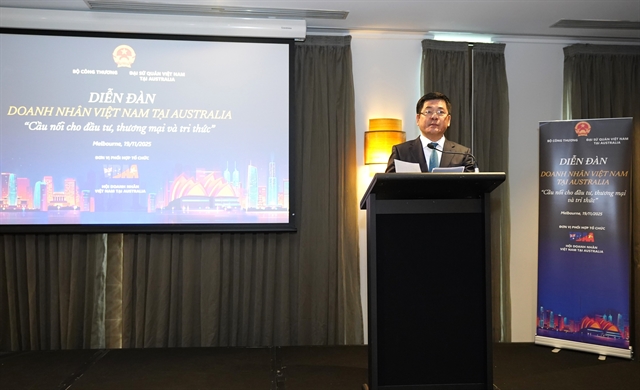
By Công Thành
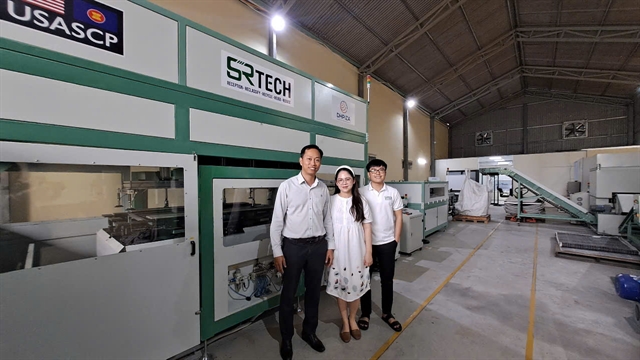
|
| Members of the 5R-Tech company. They have come up with a technological solution which can recycle 90 per cent of removed solar panels, transforming them into materials for newly manufactured products. VNS Photo Công Thành |
ĐÀ NẴNG — Beginning as an innovation project at the incubation centre of the central city’s Hi-tech Park, a group of lecturers and students of Đà Nẵng University of Science and Technology have worked out a way of putting life into old solar panels.
They have come up with a way of recycling solar panels, turning them into input material, so they can be re-used as new products.
The 5R-Tech company, which started the study in 2021, was the first company of its kind in the city and has successfully introduced the first prototype version of a solar panel recycling system, which costs 50 per cent less in comparison to the imported technology.
The research group debuted its own study solar panel recycling system at a factory in Liên Chiểu district, with a high rate of 90 per cent in collection material to be re-purposed into a new product.
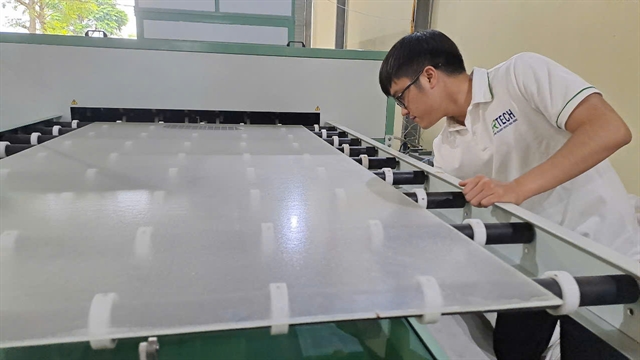
|
| Hồ Minh Đạt checks the production line of a solar panel recycling system at a workshop in Đà Nẵng City. The solution can be operated at a low cost. VNS Photo Công Thành |
Đỗ Thế Cần, a lecturer and a member of the group, said at least three per cent of total solar panels (54 million panels in 2023) from projects in Việt Nam are simply dumped in landfill, if they are found to be substandard or have faults during post-production delivery.
“The number of solar panels that will need to be removed after 10-years of use will also be increasing and low-efficiency panels are often removed every three or five years after installation,” Cần said.
“Solar panels are often released at dumps, rather than taking them for recycling, as solutions and technology providers are not available, or it costs too much, ” he said.
The lecturer explained that the group intentionally selected free-chemical recycling technology in dealing with the hazardous heavy metals used in solar panels such as wolfram and lead.
Hồ Minh Đạt, a post-graduated student at the university, said the 5-R recycling solution of the group costs around VNĐ500,000 (US$20) for each panel.
“We could earn from VNĐ150,000 ($6) to VNĐ200,000 ($8) from recycled material collected from each solar panel including glass, aluminium and steel. Unbroken tempered glass can be reused in different products, and the group has been seeking glass producers in recycling ground glass into new products,” Đạt said.
He said recycling solar panels would help reduce emissions, 1.2 tonnes of carbon on a 1MW capacity, but it does not account for the pollution from the composition heavy metals used.
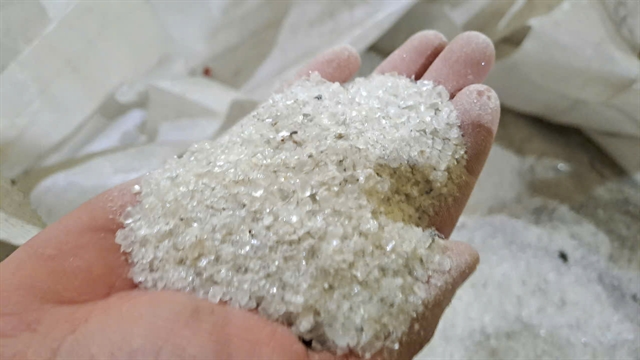
|
| Powder of tempered glass is collected from recycling solar panel at 5R Tech company in Đà Nẵng City. VNS Photo Công Thành |
A report from the group showed 750kg of aluminium had been collected from 300 solar panels, along with 900 electric boxes and cables and 60kg of metal, while the team had been able to reuse directly more than seven glass panels.
Phạm Thị Thanh Trà, CFO of 5R-Tech company, said the research from the group had earned them a fund of $200,000 from the US-ASEAN Smart Cities Partnership.
Trà said the group spent two years working to complete the system, with the solution now ready to be offered to the solar panel and electronic waste recycling industry in Việt Nam and overseas.
Cần, a leading member of the group, said it now needs more cooperations from international partners in achieving the assessment from international standard organisations, and investment, to scale up the solution worldwide.
“We need key partners in commercialising the technological solution into profitable industries in Việt Nam. Of course intellectual property rights protection for our R&D must be ensured for further technological research in the future.”
A report from the ministry of Science and Technology has listed Việt Nam as one of the top-ten solar power developers in the world, with an accumulated total capacity of 942GW.
Đà Nẵng is seen as a leading locality in Việt Nam boosting the use of renewable energy at industrial parks and households.
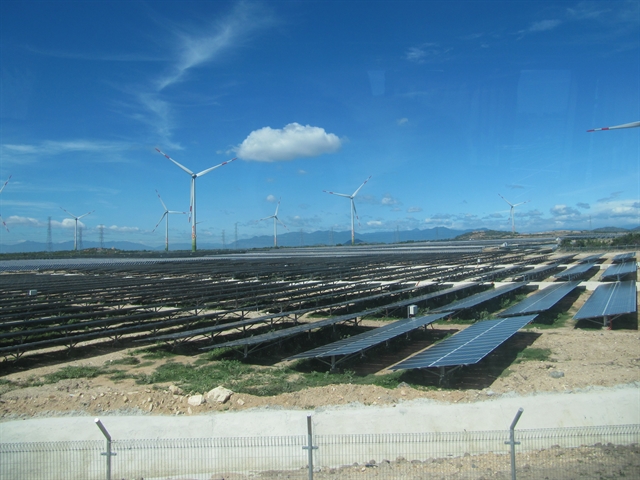
|
| A solar farm operates in central Việt Nam. The country has been leading in solar power development projects, but it needs recycling solutions in dealing with hazardous waste from solar power panels. VNS Photo Công Thành |
According to the city’s power corporation, there are more than 1,000 roof-top solar power projects, of which 52 per cent are on residential buildings, supplying 1.7 million KWh to the city’s grid each year.
It said more new projects with a total capacity of 5,000 KWh would be built in the city by the end of this year.
At least VNĐ7 billion ($304,000) had been invested into local solar roof-top systems, including residential and public buildings, as well as in factories at industrial parks following solar power contracts between power corporations and households.
Statistics from the city’s industry and trade department showed that Đà Nẵng has great renewable energy potential, with 2,000 hours of sunlight per year, with the potential to generate an estimated 1,140 MW (Megawatts) of solar power.
About 30 per cent of the city’s population use solar power for water heaters, while about 20 five-star hotels and resorts are using a solar power water heating system.
Đà Nẵng, in co-operation with the European Union, launched a pilot project to develop solar energy at two hospitals, two schools and six households, and build a database of solar power capacity in the city, as well as a policy framework for clean energy development.
City authorities said there will be further development of renewable energy projects from ocean waves, tides and biogas from rural areas, in the future.